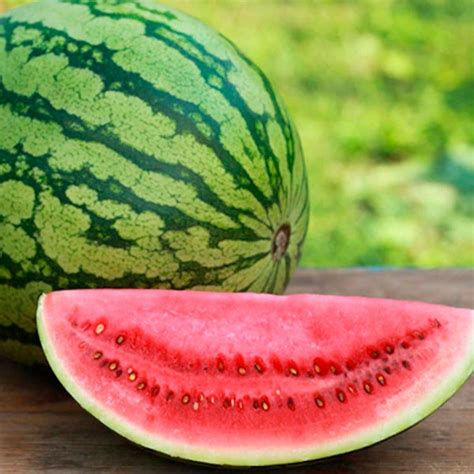Crimson Sweet Watermelon: Your Path to Sweet Success
The Crimson Sweet watermelon. Just the name conjures images of sun-drenched fields and juicy, refreshing bites on a hot summer day. But what exactly makes this variety so special, and how can you ensure sweet success when growing or buying one? This comprehensive guide will delve into everything you need to know about the Crimson Sweet, from its origins and unique characteristics to tips for cultivation and selection.
What Makes Crimson Sweet Watermelon Unique?
Crimson Sweet watermelons stand out for their consistently high sugar content and intensely sweet flavor. This isn't just hype; it's a result of careful breeding and selection over decades. Unlike some varieties prone to variability in sweetness depending on growing conditions, Crimson Sweet delivers a reliably delicious experience. Its deep red flesh and numerous small seeds contribute to its overall appeal. The rind is typically dark green with darker stripes, providing a visual cue to its ripeness (more on that later).
How to Grow Crimson Sweet Watermelons: A Step-by-Step Guide
Growing your own Crimson Sweet watermelons can be a rewarding experience, offering the freshest, sweetest fruit imaginable. Here's a step-by-step guide to help you achieve a bountiful harvest:
1. Choosing the Right Location and Soil:
Crimson Sweet watermelons thrive in full sun (at least 6-8 hours daily) and well-drained soil. Amend heavy clay soils with compost to improve drainage and aeration. A slightly acidic to neutral pH (6.0-7.0) is ideal.
2. Starting Seeds or Planting Seedlings:
You can start seeds indoors 3-4 weeks before the last expected frost or purchase seedlings from a reputable nursery. Direct sowing is also possible once the soil has warmed up. Plant seeds or seedlings 1-2 inches deep and space them 2-4 feet apart, allowing ample room for vine growth.
3. Watering and Fertilizing:
Consistent watering is crucial, especially during flowering and fruit development. Avoid overwatering, which can lead to root rot. Apply a balanced fertilizer according to package instructions, paying attention to the nitrogen levels to avoid excessive vine growth at the expense of fruit production.
4. Trellising (Optional but Recommended):
While not strictly necessary, trellising helps improve air circulation, reduces disease risk, and makes harvesting easier. Use sturdy stakes or a trellis system to support the growing vines.
5. Pest and Disease Management:
Regularly inspect plants for signs of pests like aphids, squash bugs, or cucumber beetles. Implement appropriate pest control measures, such as handpicking, insecticidal soap, or neem oil. Good air circulation and proper watering help prevent fungal diseases.
6. Harvesting:
Crimson Sweet watermelons are typically ready for harvest 75-90 days after planting. Look for these signs of ripeness: the rind will be deep green with darker stripes, and a dull, not shiny appearance; the tendril closest to the fruit will turn brown and dry; and when you thump the melon, it will sound hollow.
Selecting the Perfect Crimson Sweet at the Store
If growing your own isn't feasible, selecting a ripe Crimson Sweet from the store is still achievable. Here's what to look for:
- Rind Color and Texture: Look for a deep green rind with dark green stripes, a dull appearance, and a firm feel. Avoid melons with soft spots, cuts, or bruises.
- Field Spot: A creamy yellow spot on the underside of the watermelon indicates the melon rested on the ground and ripened fully in the field.
- Sound: A hollow sound when gently thumped is a good indication of ripeness.
Frequently Asked Questions about Crimson Sweet Watermelons
How long does a Crimson Sweet watermelon last?
A whole, uncut Crimson Sweet watermelon can last for up to two weeks when stored at room temperature in a cool, dry place. Once cut, refrigerate it and consume within 3-5 days.
Are Crimson Sweet watermelons seedless?
No, Crimson Sweet watermelons are not seedless. They have numerous small, black seeds that are generally considered palatable.
What are the nutritional benefits of Crimson Sweet watermelons?
Crimson Sweet watermelons are a good source of vitamins A and C, potassium, and antioxidants. They are also low in calories and fat.
What are some creative ways to use Crimson Sweet watermelon?
Beyond simply eating it fresh, Crimson Sweet watermelon can be used in salads, smoothies, salsas, and even grilled as a unique side dish.
By following these tips and tricks, you can confidently navigate the world of Crimson Sweet watermelons, whether you're growing them yourself or selecting the perfect one at the store. Enjoy the sweet success!

